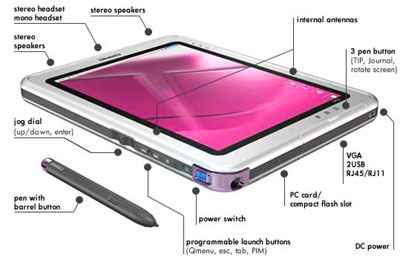AIM :- TABLET PC TROUBLESHOOTING
Below are some common hardware troubleshooting step to perform:
1. Visual Inspection
- Check for Physical Damage: Inspect the tablet for any visible signs of damage, such as cracks, dents, or loose components.
- Inspect Ports and Connectors: Look for debris or damage in charging ports, headphone jacks, and other connectors.
2. Power Cycle
- Force Restart: If the tablet is unresponsive, perform a force restart by holding down the power button for 10-15 seconds.
- Check Battery Health: If the tablet doesn’t turn on, connect it to a charger and let it charge for at least 30 minutes before trying to power it on again.
3. Battery Testing
- Battery Replacement: If the tablet is not holding a charge, consider replacing the battery if it is user-replaceable.
- Use a Multimeter: Measure the voltage of the battery to ensure it is within the expected range.
4. Display Issues
- External Display Test: If the screen is not functioning, connect the tablet to an external display (if supported) to check if the issue is with the display or the graphics hardware.
- Check for Screen Damage: Look for cracks or liquid damage on the screen.
5. Storage and Memory Testing
- Check Storage Space: Ensure there is enough free space on the device. Low storage can cause performance issues.
- Run Diagnostic Tools: Use built-in diagnostic tools or third-party apps to check the health of the storage and RAM.
6. Connectivity Tests
- Wi-Fi and Bluetooth: Test the Wi-Fi and Bluetooth functionality by connecting to different networks or devices. If issues persist, consider resetting network settings.
- SIM Card Test: For cellular-enabled tablets, remove and reinsert the SIM card to ensure proper connection.
7. Peripheral Testing
- Test Accessories: If peripherals (like keyboards or styluses) are not working, test them on another device to rule out accessory issues.
- USB Ports: Connect different USB devices to check if the ports are functioning properly.
8. Software and Firmware Updates
- Check for Updates: Ensure the tablet’s operating system and firmware are up to date, as updates can resolve hardware compatibility issues.
- Factory Reset: As a last resort, perform a factory reset to eliminate software-related issues. Make sure to back up data first.
9. Thermal Issues
- Check for Overheating: If the tablet is overheating, ensure that vents are not blocked and that the device is not being used in a hot environment.
- Thermal Paste: If you are comfortable disassembling the tablet, check the thermal paste on the CPU/GPU and replace it if necessary.
10. Component Replacement
- Replace Faulty Components: If you identify a specific faulty component (like the battery, screen, or charging port), consider replacing it if you have the skills and tools to do so.
Safety Precautions
- Static Electricity: Use an anti-static wrist strap when handling internal components to prevent static damage.
- Power Off: Always power off the device and disconnect it from any power source before opening it up.
Conclusion
By systematically performing these experiments, you can identify and resolve many common hardware issues with tablet PCs. If the problem persists after these troubleshooting steps, it may be necessary to consult a professional technician or the manufacturer for further assistance.

Post a Comment
If you have any doubts, please let me know